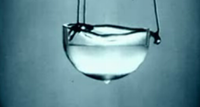
Photo from wikipedia
With the explosive growth of space debris, collisions among space debris and spacecrafts seem to be inevitable, which may greatly threaten the structure of on-orbit spacecrafts as well as astronauts’… Click to show full abstract
With the explosive growth of space debris, collisions among space debris and spacecrafts seem to be inevitable, which may greatly threaten the structure of on-orbit spacecrafts as well as astronauts’ safety. It is of crucial importance to locate the leak source and evaluate the corresponding damage quickly and accurately to ensure the safety of astronauts and spacecraft equipment. It is widely accepted that acoustic emission method can be used to detect on-orbit leak for space station; however, accurate prediction of vacuum leak noise in space station is difficult as jet and jet noise in vacuum environments are different from those in terrestrial environment. Therefore, this paper tries to investigate sound generations of vacuum leak jet by numerically analyzing dynamics of unsteady vacuum jet flow. Specifically, numerical simulation based on realizable k-ε model is adopted to study the aerodynamic properties and the aeroacoustic characteristics. Results show that RANS turbulent model can capture the pressure fluctuation with high computation efficiency and acceptable accuracy. Secondly, leak from 1 atm to vacuum forms a supersonic flow with Mach number ranging from 2 to 3, accompanied by obvious gradients of steady density, pressure, and temperature. However, the terrestrial leak from 2 atm to 1 atm forms subsonic jet flow with gradually varying gradients of density, pressure, and temperature. Thirdly, obvious reflections of pressure perturbations at the surface, with the mean free path of air molecule being 0.6 mm, can be found and form cavity-like acoustic resonance. Such resonant mechanism contributes to harmonic acoustic properties of the vacuum jet noises besides the broadband turbulent mixing noises.
Journal Title: Applied Sciences
Year Published: 2020
Link to full text (if available)
Share on Social Media: Sign Up to like & get
recommendations!